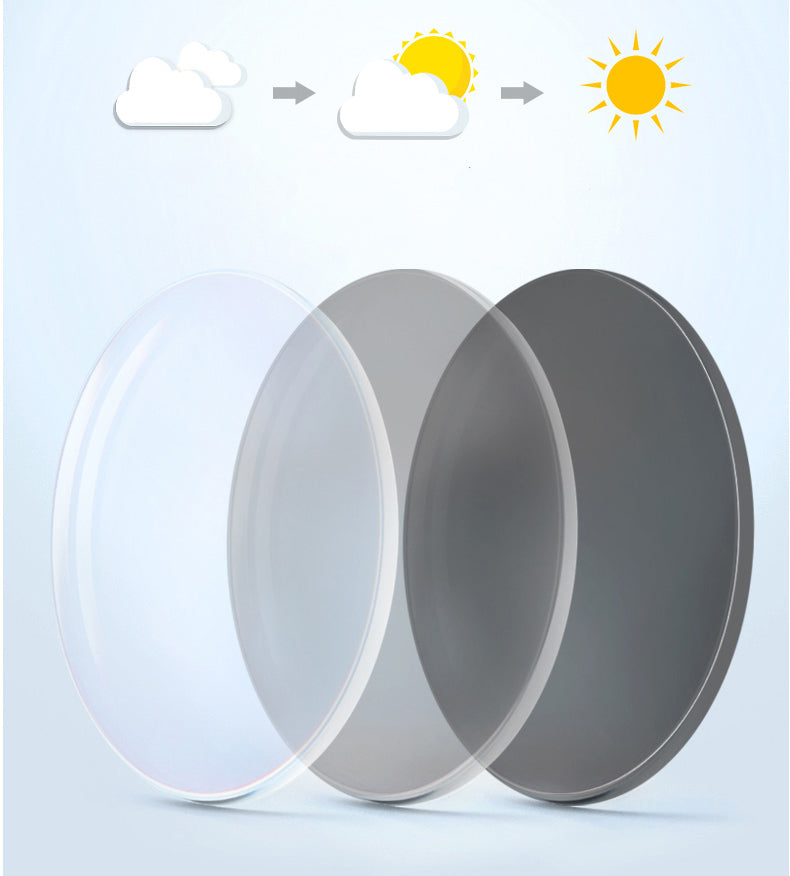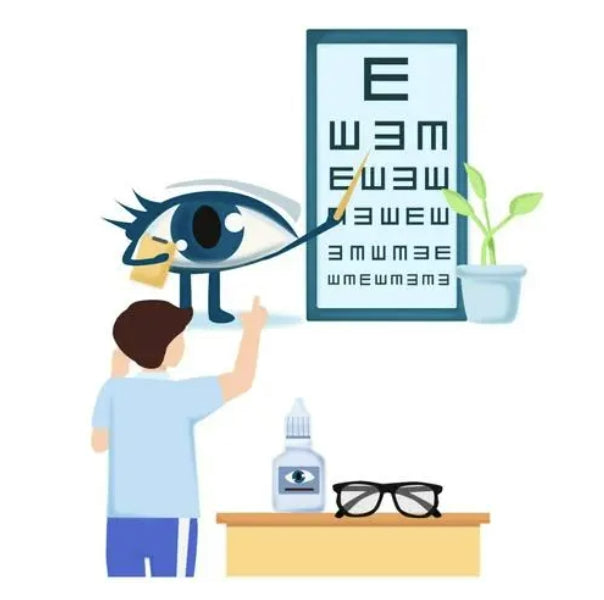In the hot summer, the sun is dazzling, and more and more people who often go out like choose photochromic glasses . A photochromic lens that can meet indoor and outdoor make people exciting. Do you know how to choose photochromic lenses? Did you choose the right photochromic lens?
First of all, what are photochromic lenses?
Photochromic lenses, also known as "photosensitive lenses". According to the principle of reversible reaction of light and color interchange, the lens can quickly darken under the irradiation of light and ultraviolet rays, block strong light and absorb ultraviolet rays, and have a neutral absorption of visible light; when returned to a dark place, it can quickly restore the colorless and transparent state, ensuring the light transmittance of the lens. Therefore, photochromic lenses are suitable for indoor and outdoor use at the same time to prevent sunlight, ultraviolet light, and glare from harming the eyes.
Choice of photochromic lens color:
Photochromic lenses are generally divided into three colors: gray, tea, and green, and the commonly used ones are gray and tea.
1. Gray lens: It can absorb infrared light and 98% of ultraviolet rays. Looking at objects through gray lenses will not change the color of the object itself, but the color will become darker, effectively reducing the light intensity, and the feeling will be more real and natural.
2. Brown lenses: can absorb 100% of ultraviolet rays, can filter blue light, improve visual contrast and clarity, and have a brightening effect. It is suitable for wearing in severe air pollution or foggy conditions, and is an ideal choice for drivers.
3. Green lenses: Like gray lenses, they can effectively absorb infrared light and 99% of ultraviolet rays. While absorbing light, it maximizes the green light reaching the eyes, so it has a cool and comfortable feeling, suitable for people who are prone to eye fatigue.
In summer, the weather is hot, the temperature is high, and the light is strong. It is recommended to choose gray or green lenses.
Select by color change category
Photochromic lenses can be divided into two types: substrate color change (referred to as "base change") and film layer color change (referred to as "film change")
1. The discoloration of the substrate means that the entire lens will change color when it changes color. The thicker the lens is, the darker the discoloration will be.
2. The discoloration of the film layer is the discoloration of the film layer on the surface of the lens, and the color depth of the discoloration will not be different due to the thickness of the lens.
3. How to judge the pros and cons of photochromic lenses
1. The speed of discoloration: Good discoloration lenses encounter ultraviolet rays outdoors, the discoloration speed is relatively fast, and the fading is also fast indoors.
2. The depth of discoloration: the stronger the ultraviolet rays of a good photochromic lens, the darker the color will be. Ordinary photochromic lenses may change color less.
3. For a pair of photochromic lenses, the powers of which are basically the same or for film-changing lenses. The speed and depth of color change of the two lenses are basically the same.
Four, how to choose two kinds of photochromic lenses
There is no absolute good or bad of the two kinds of photochromic lenses, each has its own advantages and disadvantages.
The degree of myopia within 300 degrees, the difference between the two eyes is within 50 degrees, you can choose the basic change;
For those with high myopia or a large difference in the diopters of the two eyes, it is better to choose a membrane change.
5. Matters needing attention when purchasing photochromic lenses
1. If the diopter difference between the two eyes is more than 100 degrees, it is recommended to choose film-changing lenses, which will not cause different shades of lens discoloration due to the different thickness of the two lenses.
2. If one of the photochromic lenses worn for more than one year is damaged and needs to be replaced, it is recommended to replace both of them together, so that the discoloration effect of the two lenses will not be different due to different use times.
3. If you have high intraocular pressure or glaucoma, remember not to wear photochromic lenses or sunglasses.
4. The color-changing lens changes color according to the strength of ultraviolet rays, so it may change color even in cloudy conditions. Please note that this is not a quality problem of the lens itself.
5. If the driver chooses photochromic lenses, the photochromic lenses may not change color in the car. This is because most of the front windshields now have the function of blocking ultraviolet rays, so the car is isolated from ultraviolet rays, and the photochromic lenses will not change color. Now some manufacturers have developed the color-changing technology in the car, which will not cause the lens to change color in the car.



































